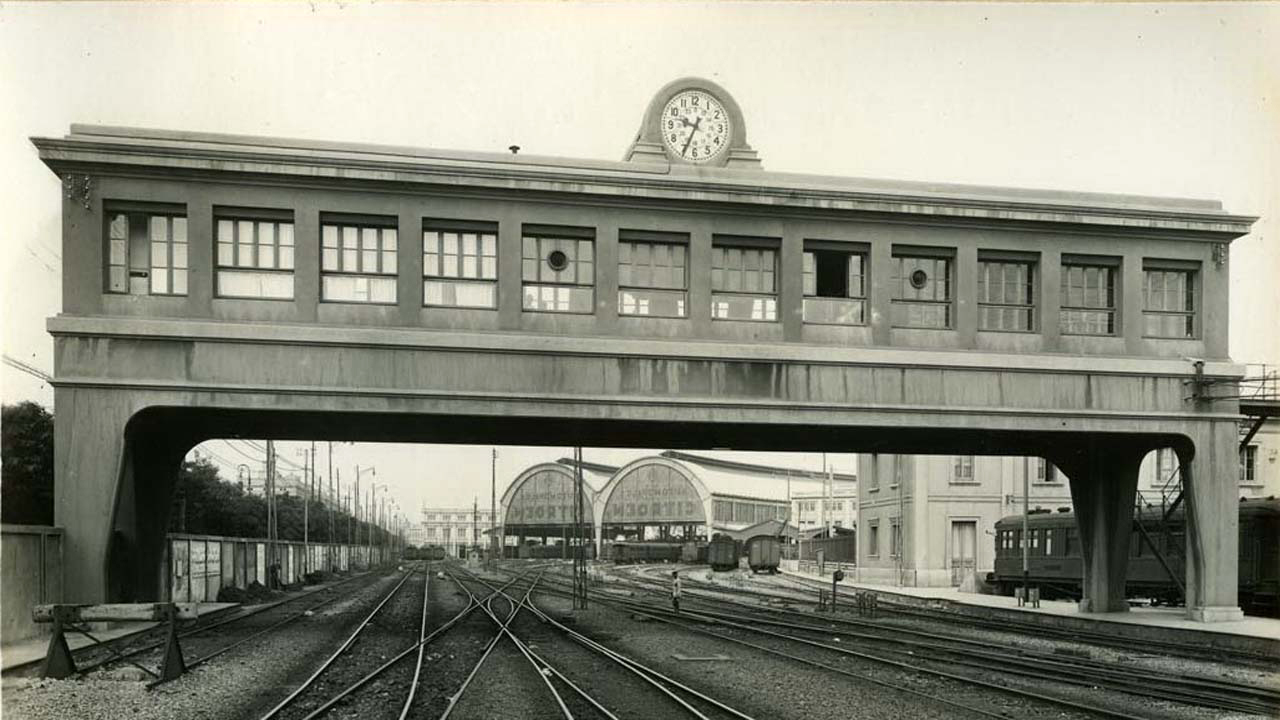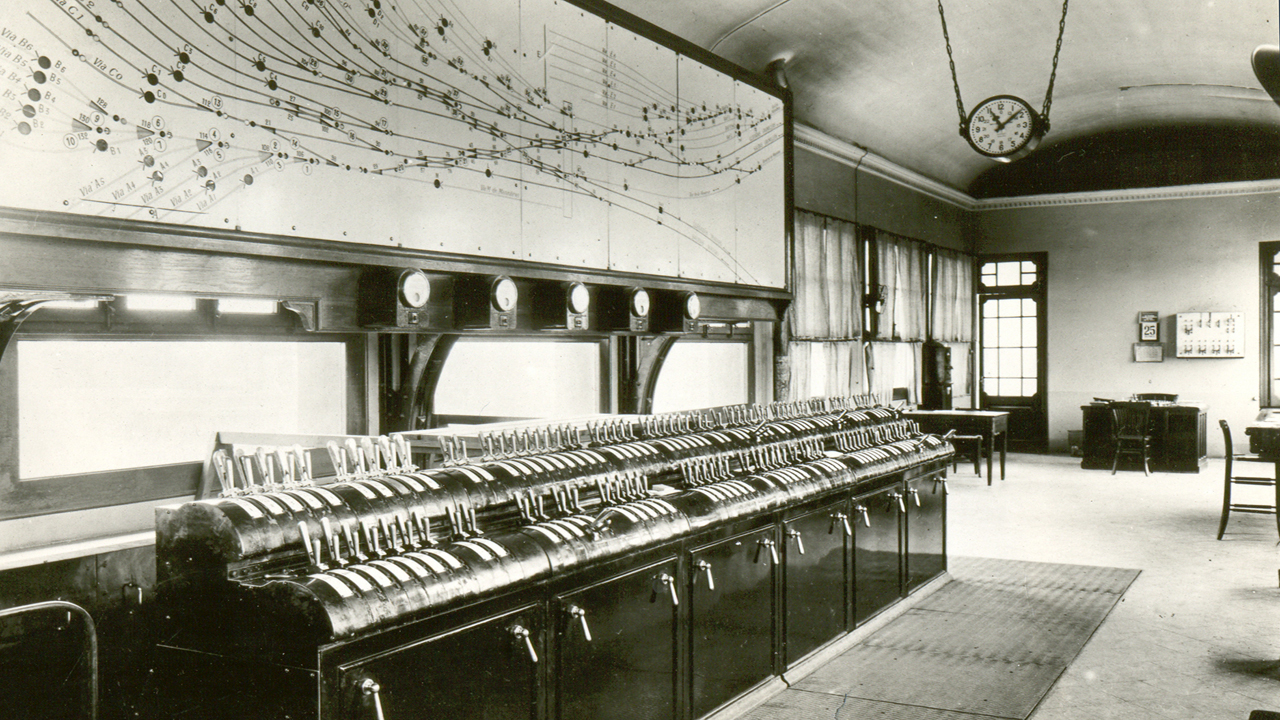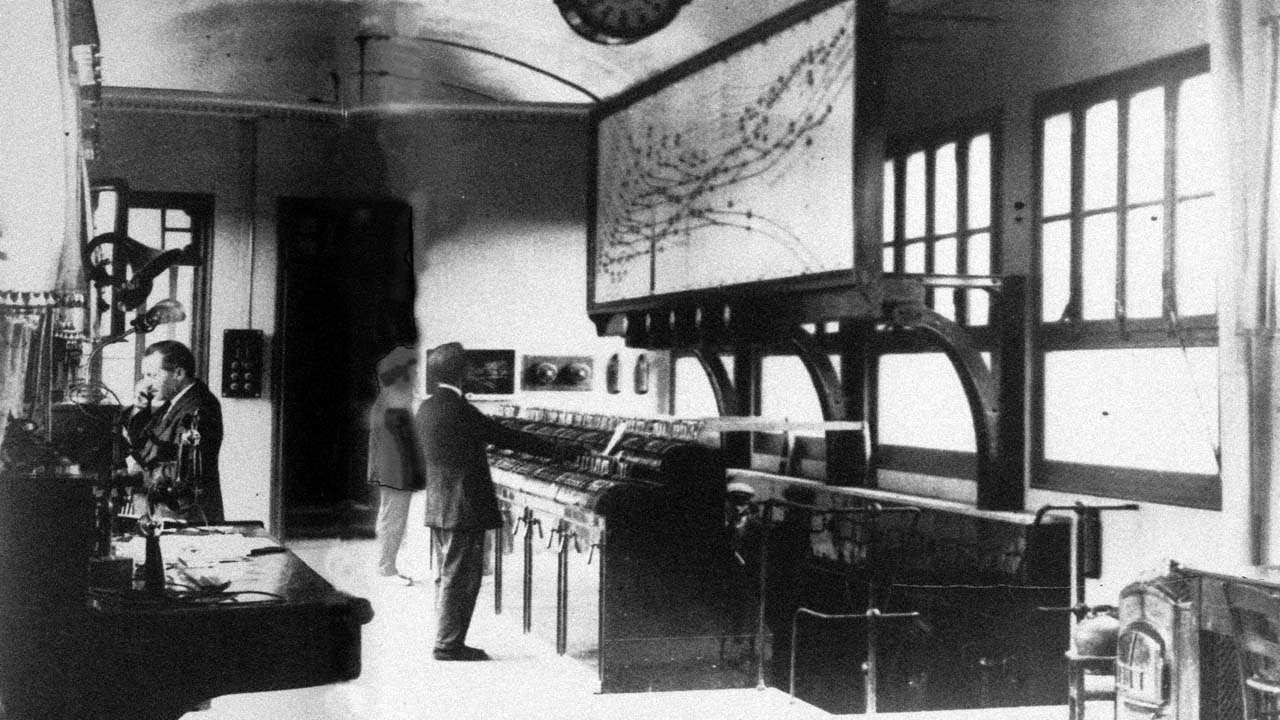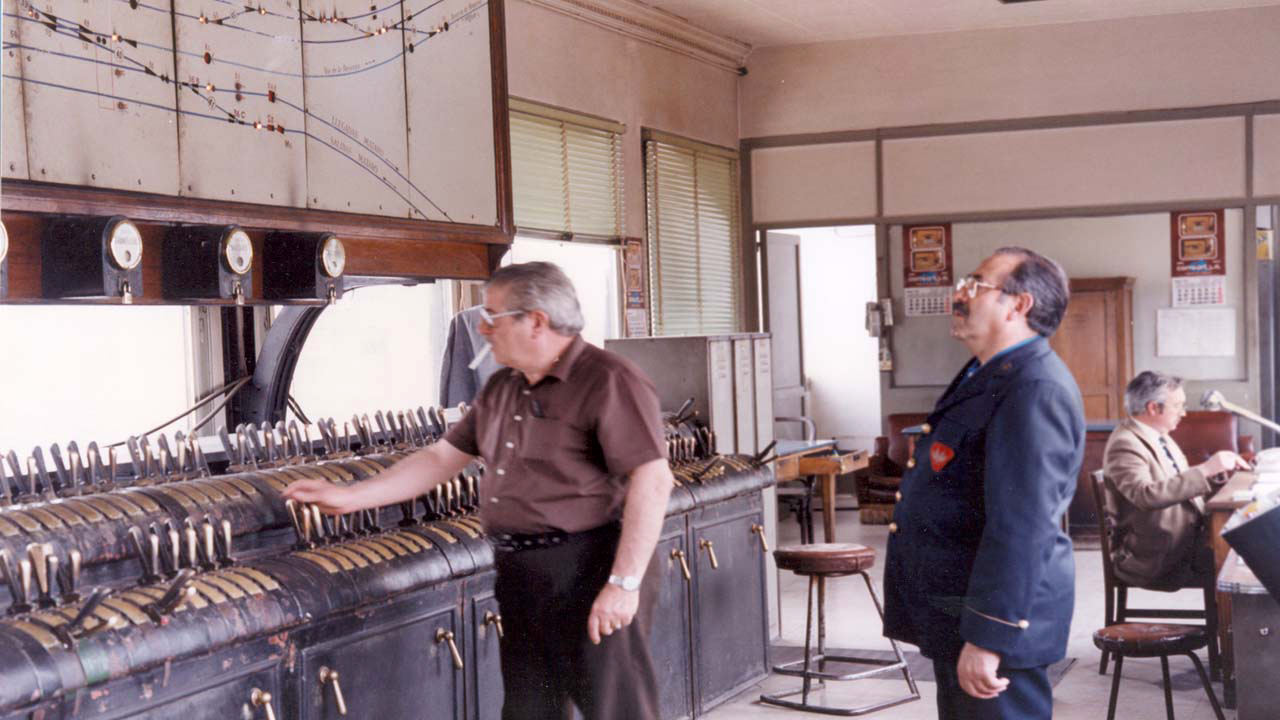
Old Interlocking Bridge building, 1931

Original location of the "Interlocking Table", 1952

Inside the interlocking central building, 40-50s

"Interlocking Table", 80s
2 - "Interlocking Table" from Barcelona’s Francia Station
Located beside the entrance to the installations of the
old Steam Depot is this floor’s most valuable element: the
“Interlocking Table” from Barcelona’s Francia Station. It
stands out due to its size and technical complexity. It
functioned from 1929, the year of Barcelona’s Universal
Expo, until 1989. It is housed in a classic railway
bridge-building, above the fan of sidings leading into the
station, like the ones that were built all over Europe. This
building, which disappeared as part of the Barcelona
Olympics project, regulated all the incoming and outgoing
railway traffic. The Table was built in 1924 featuring
innovative electromagnetic technology that streamlined and
vastly improved traffic and safety.
In large stations, the progressive rise in traffic had made
it necessary to increase the number of tracks, signals or
intersections. The problem was not the large number per se
but the fact that all the operations had to be perfectly
coordinated, so as to avoid accidents. To that end, an
“interlocking” system was designed featuring a concentration
of levers in certain positions, which used mechanical means
to control manoeuvrability, making it impossible to move a
lever if it would compromise safety.
The “Table” consists of two rows of 121 levers, which
enabled the station master and the traffic factor to carry
out more than 500 possible itineraries. The open panel at
the bottom enables you to appreciate the mechanism’s
complexity. The top panel features the different indicator
lights of the 12 main tracks and those of the Barceloneta
Station (which no longer exists), located on the grounds of
the Iberian Peninsula’s first railway line, from Barcelona
to Mataró. This technology has now been replaced by a new
electronic interlocking system, based on microprocessors,
which is safer than all previous systems.
To the left of this valuable element you fill find the
entrance to the Museum’s outdoor area.


